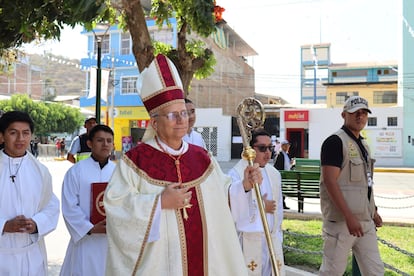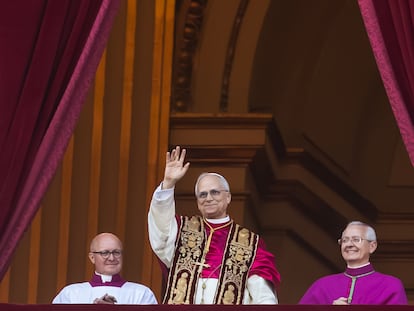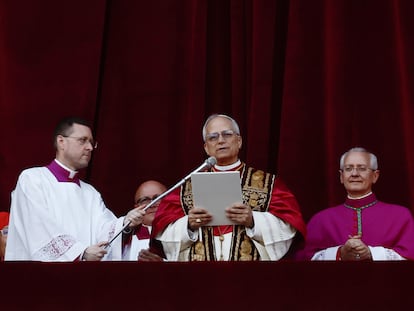Conservatives accused Prevost of covering up abuse in Peru and the United States before conclave
The Congregation for the Doctrine of the Faith investigated the allegations before the conclave and concluded that they were without merit


Leo XIV arrives to the papacy with controversy in tow. In recent months, and more explicitly in the hours leading up to the conclave, Cardinal Robert Francis Prevost has been the subject of a campaign orchestrated by ultraconservative sectors of the Church.
The accusation centers around his alleged cover-up of several sexual abuse cases committed by a Peruvian priest in 2004. According to this version, Prevost was aware of the cases and failed to investigate them in 2022, when he was serving as the bishop of Sufar and apostolic administrator of Chiclayo, located on the northern coast of Peru. The Vatican has firmly denied these accusations.
Official sources confirm that the Congregation for the Doctrine of the Faith, aware that such claims against Prevost were circulating, conducted a thorough investigation into the cases and concluded that the newly elected Pope’s conduct was impeccable.
The dossier against Prevost — released by some unreliable digital outlets — claims that in April 2022, three sisters met with the bishop to report that two priests from his diocese had abused them in 2004 when they were between the ages of nine and 14. According to the accusers, Prevost told them that the Church had no means to investigate the matter, although he encouraged them to report it to civil authorities, assuring them that an investigation would be initiated within the Church once the case was reported.
The sisters claimed that Prevost referred them to the Listening Center, an institution created by the bishop just weeks earlier to help abuse victims. According to the dossier, the sisters then approached the police to file a report but were told that the case had already expired due to the statute of limitations.
The 18-page report also accuses Prevost of covering up another sexual abuse case involving a priest in Chicago, when the now Pontiff was the provincial superior of the Augustinians. The Vatican states that it has investigated these allegations as well and found no evidence to support them. The same sources suggest it is suspicious that this attack on Prevost came just before the conclave, when his name was already being considered as a potential papal candidate.
Prevost was appointed by Pope Francis to oversee the Diocese of Chiclayo between 2014 and 2023, and during that time, several civil organizations accused him of covering up the abuse committed by the two priests. As the Vatican has done now, the diocese firmly denied these allegations at that time as well.
On Thursday afternoon, one hour after Prevost appeared on the balcony of St. Peter’s Basilica already vested as Leo XIV, Peruvian journalist Pedro Salinas, who has extensively investigated the Sodalitium Christianae Vitae movement — an organization recently dissolved by Pope Francis due to sexual abuse accusations and cult-like traits — stated that the allegations against Prevost were absolutely false: “There is no documentary evidence or solid testimonies pointing to Prevost.”
In Peru, Prevost clearly sided with the victims in the Sodalitium scandal. Reporters Pedro Salinas and Paola Ugaz, who uncovered the case with a book in 2015, faced media and judicial harassment for years without action from the Peruvian Church. However, they claim that they found a strong ally in Prevost, who played a decisive role in facilitating their direct access to Pope Francis at the Vatican. Jorge Mario Bergoglio, after receiving firsthand information from the journalists, decided to open a major investigation that concluded in January 2025 with the dissolution of Sodalicio.
Sign up for our weekly newsletter to get more English-language news coverage from EL PAÍS USA Edition
Tu suscripción se está usando en otro dispositivo
¿Quieres añadir otro usuario a tu suscripción?
Si continúas leyendo en este dispositivo, no se podrá leer en el otro.
FlechaTu suscripción se está usando en otro dispositivo y solo puedes acceder a EL PAÍS desde un dispositivo a la vez.
Si quieres compartir tu cuenta, cambia tu suscripción a la modalidad Premium, así podrás añadir otro usuario. Cada uno accederá con su propia cuenta de email, lo que os permitirá personalizar vuestra experiencia en EL PAÍS.
¿Tienes una suscripción de empresa? Accede aquí para contratar más cuentas.
En el caso de no saber quién está usando tu cuenta, te recomendamos cambiar tu contraseña aquí.
Si decides continuar compartiendo tu cuenta, este mensaje se mostrará en tu dispositivo y en el de la otra persona que está usando tu cuenta de forma indefinida, afectando a tu experiencia de lectura. Puedes consultar aquí los términos y condiciones de la suscripción digital.

